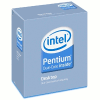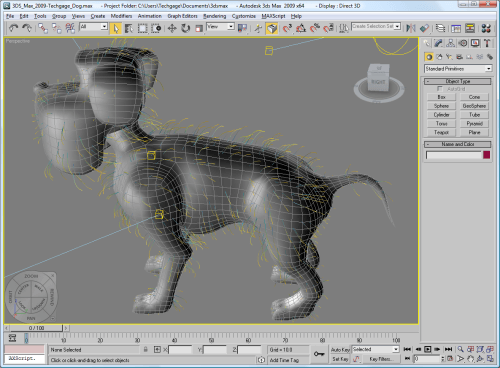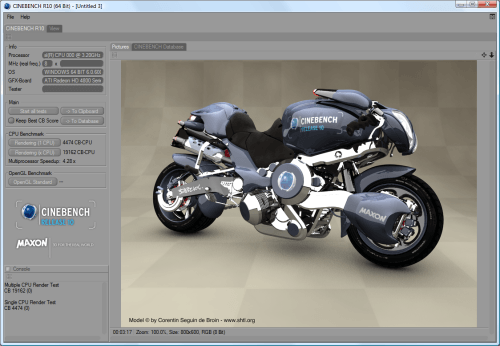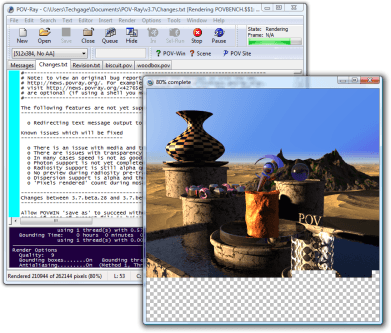- Qualcomm Launches Snapdragon 4 Gen 2 Mobile Platform
- AMD Launches Ryzen PRO 7000 Series Mobile & Desktop Platform
- Intel Launches Sleek Single-Slot Arc Pro A60 Workstation Graphics Card
- NVIDIA Announces Latest Ada Lovelace Additions: GeForce RTX 4060 Ti & RTX 4060
- Maxon Redshift With AMD Radeon GPU Rendering Support Now Available
Intel Pentium Dual-Core E5200

Need to upgrade or build a brand-new PC, but are on a very limited budget? If you don’t mind making some small sacrifices, Intel’s Wolfdale-based Pentium Dual-Core E5200 is worthy of serious consideration. Despite retailing for only $80, it offers solid performance and some incredible overclocking headroom.
Page 4 – Workstation: Autodesk 3ds Max, Cinebench, POV-Ray
Autodesk’s 3ds Max is without question an industry standard when it comes to 3D modeling and animation, with DreamWorks, BioWare and Blizzard Entertainment being a few of its notable users. It’s a multi-threaded application that’s designed to be right at home on multi-core and multi-processor workstations or render farms, so it easily tasks even the biggest system we can currently throw at it.
For our testing, we use two project files that are designed to last long enough to find any weakness in our setup and also allows us to find a result that’s easily comparable between both motherboards and processors. The first project is a dog model included on recent 3ds Max DVD’s, which we infused with some Techgage flavor.
Our second project is a Bathroom scene that makes heavy use of ray tracing. Like the dog model, this one is also included with the application’s sample files DVD. The dog is rendered at a 1100×825 resolution, while the Bathroom is rendered as 1080p (1920×1080).

If I had to pick a graph to become a set of stairs, it would be this one. 3DS Max perfectly scales with faster CPUs, and because of that, the E5200 again sits at the absolute bottom. The results aren’t bad by any means, especially when you compare it to the Dual-Cores that cost twice as much.
Cinebench R10
Like 3DS Max, Cinema 4D is another popular cross-platform 3D graphics application that’s used by new users and experts alike. Its creators, Maxon, are well aware that their users are interested in huge computers to speed up rendering times, which is one reason why they released Cinebench to the public.
Cinebench R10 is based on the Cinema 4D engine and the test consists of rendering a high-resolution model of a motorcycle and gives a score at the end. Like most other 3D applications on the market, Cinebench will take advantage of as many cores as you can throw at it.

Like 3DS Max, Cinebench also scales fairly well with faster CPUs, with the E5200 sitting at 5694 points for the multi-threaded test, and 2954 for our single. Once again though, for the price, there seems to be quite a bit of value packed in here. The E8400 is twice as expensive, but its score certainly doesn’t stress that.
POV-Ray 3.7
Similar to Cinebench, the “Persistence of Vision Ray Tracer” is as you’d expect, a ray tracing application that also happens to be cross-platform. It allows you to take your environment and models and apply a ray tracing algorithm, based on a script you either write yourself or borrow from others. It’s a free application and has become a standard in the ray tracing community and some of the results that can be seen are completely mind-blowing.
The official version of POV-Ray is 3.6, but the 3.7 beta unlocks the ability to take full advantage of a multi-core processor, which is why we use it in our testing. Applying ray tracing algorithms can be extremely system intensive, so this is one area where multi-core processors will be of true benefit.
For our test, we run the built-in benchmark, which delivers a simple score (Pixels-Per-Second) the the end. The higher, the better. If one score is twice another, it does literally mean it rendered twice as fast.

POV-Ray is yet another benchmark that scales well, and this is one in particular that shows just how adequate the E5200 is in certain types of rendering. Its lack of Cache and lower FSB don’t halter it much here, with the E8600 proving only 40% faster. When Quad-Cores are brought into question though, especially i7, the rest have no choice but to weep.
Support our efforts! With ad revenue at an all-time low for written websites, we're relying more than ever on reader support to help us continue putting so much effort into this type of content. You can support us by becoming a Patron, or by using our Amazon shopping affiliate links listed through our articles. Thanks for your support!








